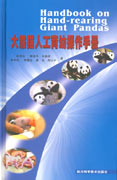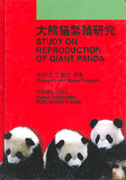|
 Since David Pere first introduced the giant panda to the world, Western explorers and natural historians began rushing into the panda habitats in China in various names. They collected materials here and wrote a lot of scientific reports, popular science books and monographs to describe this rare animal peculiar to China. Among these writings, the most famous are Trailing the Giant Panda (Roosevelt 1929), The Lady and the Panda (Harkenss 1938), Men and Pandas (Morris 1961), A Morphological Study Of Evolutionary Mechanisms (Davis 1964), and The Wilderness Home of the Giant Panda (Sheldon 1974). Since David Pere first introduced the giant panda to the world, Western explorers and natural historians began rushing into the panda habitats in China in various names. They collected materials here and wrote a lot of scientific reports, popular science books and monographs to describe this rare animal peculiar to China. Among these writings, the most famous are Trailing the Giant Panda (Roosevelt 1929), The Lady and the Panda (Harkenss 1938), Men and Pandas (Morris 1961), A Morphological Study Of Evolutionary Mechanisms (Davis 1964), and The Wilderness Home of the Giant Panda (Sheldon 1974).
 Systematic and deep research on the giant panda conducted by Chinese scientists started in the 1960s. By the end of 2000, they have published more than 800 research papers, more than ten monographs and more than ten volumes of collected research papers, such as Wolong Giant Pandas, Anatomy of the Giant Panda- Systematic anatomy and Organ Histology, Reproductive Physiology and Artificial Reproduction of the Giant Panda, Researches and Progress in Giant Panda Biology, Reproduction and Disease Treatment of the Giant Panda, Natural Shelters of the Giant Panda in Qingling, Manual Breeding of the Giant Panda, A Handbook on the Manual Breeding of the Giant Panda, A Study of the Giant Panda¡¯s Reproduction. From various perspectives like morphology, ecogeography, taxonomy, palaeobiology and fossilology, physiology and biochemistry, reproduction in the wild and in artificial breeding, and disease treatment the research work has been conducted and great progress has been achieved. Systematic and deep research on the giant panda conducted by Chinese scientists started in the 1960s. By the end of 2000, they have published more than 800 research papers, more than ten monographs and more than ten volumes of collected research papers, such as Wolong Giant Pandas, Anatomy of the Giant Panda- Systematic anatomy and Organ Histology, Reproductive Physiology and Artificial Reproduction of the Giant Panda, Researches and Progress in Giant Panda Biology, Reproduction and Disease Treatment of the Giant Panda, Natural Shelters of the Giant Panda in Qingling, Manual Breeding of the Giant Panda, A Handbook on the Manual Breeding of the Giant Panda, A Study of the Giant Panda¡¯s Reproduction. From various perspectives like morphology, ecogeography, taxonomy, palaeobiology and fossilology, physiology and biochemistry, reproduction in the wild and in artificial breeding, and disease treatment the research work has been conducted and great progress has been achieved.
 What is particularly note-worthy is the great achievement in the theory and practice in the artificial reproduction and manual breeding of the giant panda. In the annual conference of the Giant Pandas' Reproduction and Breeding Committee of China established in 1988, a lot of scientific research papers are exchanged. Since 1995, experts and scholars from the U.S., Japan, Korea, German and France also participated in the conference. Through domestic and international communication and cooperation, a number of key problems have been successfully tackled, such as the difficulty of mating in the giant panda's heat period, the difficulty of delivery in pregnancy, and low survival rate of panda cubs. Great progress has also been made in the prophylaxis and treatment of diseases of the giant panda. What is particularly note-worthy is the great achievement in the theory and practice in the artificial reproduction and manual breeding of the giant panda. In the annual conference of the Giant Pandas' Reproduction and Breeding Committee of China established in 1988, a lot of scientific research papers are exchanged. Since 1995, experts and scholars from the U.S., Japan, Korea, German and France also participated in the conference. Through domestic and international communication and cooperation, a number of key problems have been successfully tackled, such as the difficulty of mating in the giant panda's heat period, the difficulty of delivery in pregnancy, and low survival rate of panda cubs. Great progress has also been made in the prophylaxis and treatment of diseases of the giant panda.

A Brief Introduction of China Conservation and Research Center for Giant Panda
|